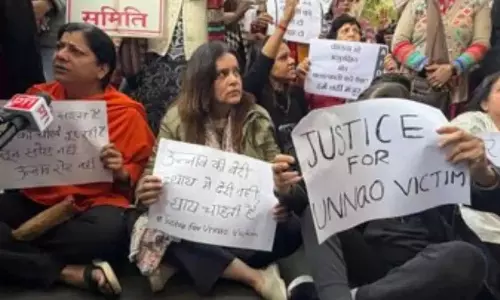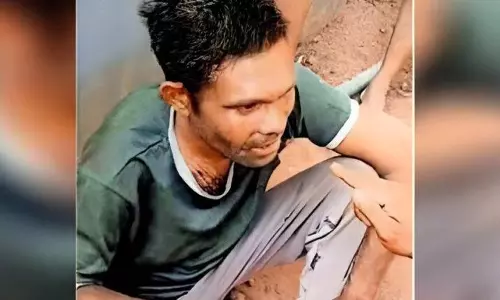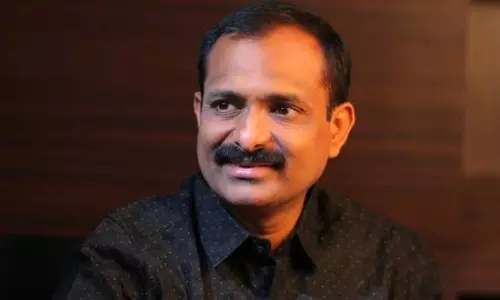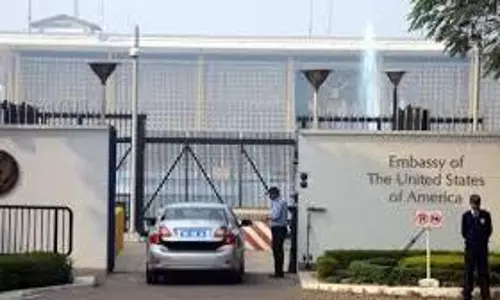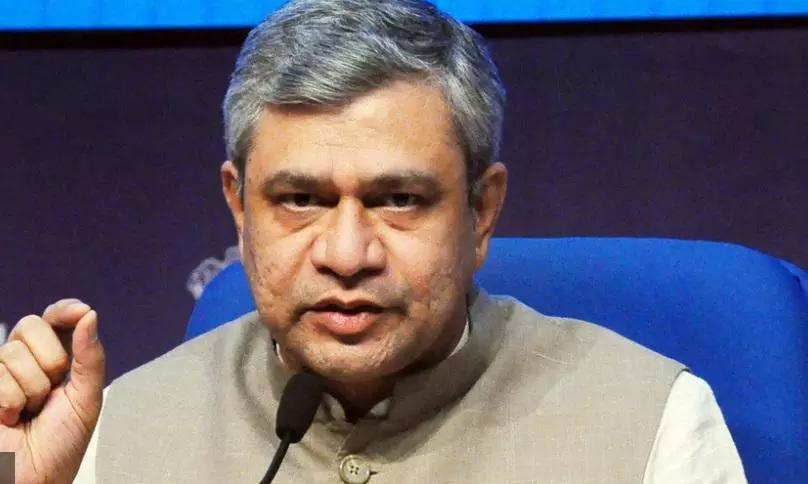
Train accidents declined by 73% in last 10 years: Ashwini Vaishnaw
text_fieldsNew Delhi : As a consequence of various safety measures taken by Indian Railways there has been an over 70 per cent decline in the number of train accidents during the last 10 years (2014-2024), Railway Minister Ashwini Vaishnaw said in a written reply in the Lok Sabha on Wednesday.
"Over the years, there has been a steep decline in the number of accidents. Consequential Train Accidents have reduced from 135 in 2014-15 to 40 in 2023-24," the Minister said.
He said that the causes of these accidents broadly include track defects, Loco/Coach defects, equipment failures and human errors.
The minister pointed out that the consequential train accidents during the period 2004-14 was 1711 (average 171 per annum), which has declined to 678 during the period 2014-24 (average 68 per annum).
Another important index showing improved safety in train operations is Accidents per Million Train Kilometer (APMTKM) which has reduced from 0.11 in 2014-15 to 0.03 in 2023-24, indicating an improvement of 73 per cent during this period, he explained.
Ashwini Vaishnaw said that safety is accorded the highest priority on Indian Railways and the budgetary allocation for safety related measures had been increased from 87,327 crore to 1.09 lakh crore in 2024-25.
He highlighted that various safety measures taken to enhance safety in train operations include a marked increase in the safety-related expenditure in the last 10 years. These include Electrical/Electronic Interlocking Systems with centralised operation of points and signals have been provided at 6,608 stations up to 31.10.2024 to eliminate accidents due to human failure.
Besides, Interlocking of Level Crossing (LC) Gates has been provided at 11,053 level Crossing Gates up to 31.10.2024 for enhancing safety. Complete Track Circuiting of stations to enhance safety by verification of track occupancy by electrical means has also been provided at 6,619 stations.
He also highlighted the adoption of the Kavach system, which requires safety certification of the highest order. Kavach was adopted as a National ATP system in July 2020. Kavach is provided progressively in a phased manner. Kavach has already been deployed on 1,548 RKm on South Central Railway and North Central Railway.
Presently, the work is in progress on Delhi-Mumbai and Delhi-Howrah corridors (approximately 3,000 Route Km). Track side works on these routes have been completed on 1,081 RKm (705 RKm on Delhi-Mumbai section and 376 RKm on Delhi-Howrah section). Regular trials are being done on these sections, he explained.
The Minister further stated that detailed instructions on issues related with safety of Signalling e.g. mandatory correspondence check, alteration work protocol and preparation of completion drawing have also been issued.
The other safety measures listed by the minister are:
System of disconnection and reconnection for S&T equipment as per protocol has been re-emphasized.
All locomotives are equipped with Vigilance Control Devices to improve alertness of Loco Pilots.
Retro-reflective sigma boards are provided on the mast which is located two OHE masts prior to the signals in electrified territories to alert the crew about the signal ahead when visibility is low due to foggy weather.
A GPS based Fog Safety Device (FSD) is provided to loco pilots in fog affected areas which enables loco pilots to know the distance of the approaching landmarks like signals, level crossing gates etc.
Modern track structure consisting of 60kg, 90 Ultimate Tensile Strength (UTS) rails, Prestressed Concrete Sleeper (PSC) Normal/Wide base sleepers with elastic fastening, fanshaped layout turnout on PSC sleepers, Steel Channel/H-beam Sleepers on girder bridges is used while carrying out primary track renewals.
Mechanisation of track laying activity through use of track machines like PQRS, TRT, T-28 etc to reduce human errors.
Ultrasonic Flaw Detection (USFD) testing of rails to detect flaws and timely removal of defective rails.
Laying of longer rails, minimizing the use of Alumino Thermic Welding and adoption of better welding technology for rails i.e. Flash Butt Welding.
Monitoring of track geometry by OMS (Oscillation Monitoring System) and TRC (Track Recording Cars).
Patrolling of railway tracks to look out for weld/rail fractures.
The use of Thick Web Switches and Weldable CMS Crossing in turnout renewal works.
Inspections at regular intervals are carried out to monitor and educate staff for observance of safe practices.
Web based online monitoring system of track assets
Detailed instructions on issues related with safety of Track e.g. integrated block, corridor block, worksite safety, monsoon precautions etc. have been issued.
IANS




